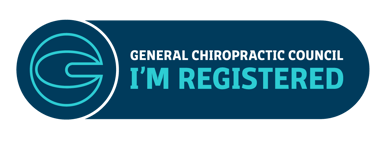Lower Back Pain: Causes and Prevention


Understanding the Causes of Lower Back Pain
Lower back pain is a common condition with numerous different causes, from poor posture to slipped discs. Research shows that up to 60% of the adult population will have low back pain at some point in their lifetime.
Common causes include
Degeneration - our bones and joints start to degenerate from 25yrs old. The discs that sit between our spinal bones lose their cushioning ability over time, which can lead to pain and stiffness in the lower back.
Postural overload - poor posture can lead to a change in how the joints distribute our weight, leading to chronic lower back pain and stiffness. This can be made worse by prolonged sitting, poor lifting techniques and bad ergonomics at the desk or in the car.
Sacro-iliac joint dysfunction - this is quite a common one in clinic. The SI joints form part of our pelvis and a tilt or twist here can cause inflammation and pain. This can present as lower back pain, buttock pain and sometimes down into the back of the thigh or round into the groin.
Bulging/Slipped disc - Discs act as a cushion between our spinal joints to protect us like the cartilage does in our knees. A slipped disc can occur from wear and tear over time, improper lifting or an injury. This can take at least 6 weeks to heal and the pain can range from very mild to severe. Pain is usually felt on one side of the lower back and can radiate to 1 or both legs, all the way to the foot. (known as sciatica). There is sometimes numbness, tingling, or a weakness in the foot also.
Pregnancy related back pain - hormonal changes and a growing bump can start to cause aches and pains in the lower back and pelvis. This can sometimes lead to sciatica or may remain as an ongoing ache.
Fibromyalgia - This condition tends to cause widespread aches and pains in the muscles and joints. The cause is unknown but sufferers have chronic pain, fatigue and tenderness throughout their body. Whilst chiropractic cannot get rid of fibromyalgia, patients often report a reduction in overall tension and pain which makes it more manageable.
Preventing Lower Back Pain
Prevention is always better than cure, and there are several measures you can take to avoid the onset of lower back pain. Regular exercise, particularly activities that strengthen the core muscles, can provide better support for the spine. Maintaining a healthy weight reduces stress on the back, while proper posture ensures that the spine is aligned correctly, reducing the strain. This is especially important if you work at a desk.
Ergonomic adjustments in the workplace, such as using chairs that provide adequate back support and positioning computer screens at eye level, can also make a significant difference. Additionally, engaging in stretching routines can improve flexibility and reduce the risk of muscle strain.
It is also important to lift correctly. Always using your legs and not your back to lift heavy objects. Ask someone to assist you if required and avoid bending forward and twisting when lifting any load.
Treatment Options
Proper diagnosis is important to effectively manage lower back pain.
As chiropractors, we often use a combination of spinal adjustments, soft tissue therapy, exercise, and give advice on lifestyle modifications. We address the underlying causes and help alleviate your pain, improving overall function and quality of life for our patients.
Here are a few other treatment options for lower back pain you may wish to consider:
Stretching: Flexibility exercises can help reduce muscle tension when performed regularly.
Acupuncture - Can provide pain relief and reduce muscle tension.
Massage Therapy - Can relieve pain and improve mobility.
Heat and Cold Therapy - Applying heat to relax muscles and improve blood flow, or cold to reduce inflammation and numb pain can provide temporary relief from acute pain.
Yoga and Pilates - focus on strengthening and stretching muscles, improving flexibility and posture which can be effective at reducing pain and improving overall function.
Over-the-Counter Pain Relievers: Nonsteroidal anti-inflammatory drugs (NSAIDs) like ibuprofen or paracetamol might alleviate the pain in the short- term. Always be sure to read the leaflet accompanying the medications.
If you have any questions as to how we can help you with your lower back pain, please get in touch or you can book online.
Helping alleviate conditions such as back pain, neck pain, headaches, sciatica, slouched posture, slipped disc, shoulder pain and hip pain.
Follow Us




